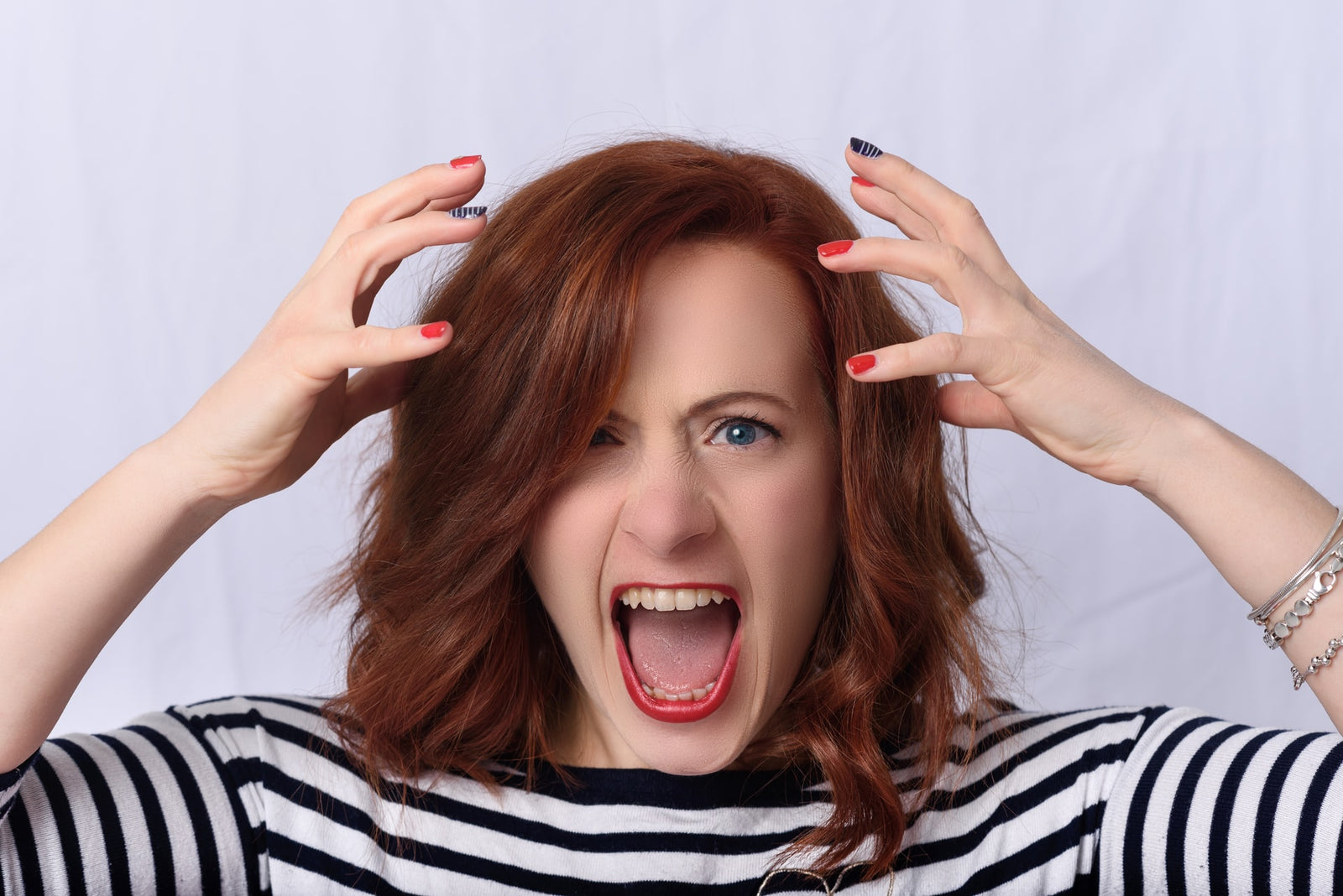It’s our crowning glory.
Hair can totally change how a person looks, from one style to another. It’s such an important part of our look that many people are so invested in maintaining great-looking hair - or losing it. (Just ask the hair and waxing salons!)
Ever seen an episode of America’s Next Top Model where the contestants go through a makeover? Hardly any season shows an episode without someone shedding a tear (or having an emotional breakdown) facing the shears.
Many of us want fuller, healthier, great looking stunning hair from the roots to the end. But not everyone is lucky to have it all-natural.
The good news is that this article will give you the low down of everything you need to know about hair, what causes hair loss, and how you can grow luscious locks fast.
Hair 101: what you need to know
Except for the palms and soles, hair grows everywhere on our body. The thing is, some human hairs are extremely fine you can hardly see them.
According to WebMD: [1]
“Hair is made up of a protein called keratin that is produced in hair follicles in the outer layer of skin. As follicles produce new hair cells, old cells are being pushed out through the surface of the skin at the rate of about six inches a year… At any one time, about 90% of the hair on a person’s scalp is growing. The hair you can see is actually a string of dead keratin cells.”
Each hair follicle goes through a cycle that depends on how old a person is, if they have a certain medical condition, and many other factors. This cycle is comprised of three phases: [1]
- Anagen, where hair actively grows from 2-6 years
- Catagen, where hair goes through transitional growth from 2-3 weeks
- Telogen, which is the resting phase lasting 2-3 months. By the end of this phase is that common shedding we see in our hair. Then it goes through phase 1 all over again.
Symptoms of hair loss
On average, adults have about 100,000 to 150,000 hairs. They also lose around 10% of it in a day. So if you find a lot of hair in the bath, in your bed, or on your brush, don’t worry. It’s totally normal!
If it’s alarmingly more than 100 strands in a day though and you can actually see bald patches on your head, you may be going through hair loss or alopecia.
A clear sign that you need to consult a medical professional? When hair loss is starting to change your appearance!
But there’s more to this.
Some hair loss can be intense and you will know right away. But often, it happens so gradually that you don’t even notice!
Here are some of the symptoms that you should watch out for: [2]
- When your forehead starts to recede (usually happens among the gents) or the part in your hair gets wider (more common among the ladies)
- When you see round or patchy bald spots, sometimes after that part gets itchy or painful. Note: this can also happen on eyebrows and beards
- When you get a handful of hair after brushing, shampooing or mildly tugging it
- When hair all over your body disappears. This would normally sound like good news (no need to regularly go to waxing salons or undergo expensive laser treatment right?), except that this typically happens during chemotherapy.
Risk factors
How do you know if you’re prone to hair loss?
According to Mayo Clinic, here are some factors that can increase the likelihood of hair loss happening: [2]
- Family history of balding, in either of your parent's families
- Age
- Significant weight loss
- Certain medical conditions, such as diabetes and lupus
- Stress
Why is my hair falling out?
While baldness, hair loss or thinning hair - however way you want to call it - is more common in men than women, everyone can experience it! [3] And there are various causes why hair falls out: [4, 5, 6, 7, 8]
- Genes. This is the most common among all causes. Baldness and hair loss can be hereditary. Male-pattern and female-pattern baldness are a thing - they happen as a person ages and may be seen in the form of receding hairline among men, or a wider part or thinning hair among women.
- Stress. Physical trauma such as car accidents, burns, injuries, illnesses or even childbirth can all lead to temporary hair loss. But it's not just physical - too much mental and emotional stress can also lead to baldness and hair thinning, which usually manifests 3-6 months after the trauma. [9]
- Hormones.Hormonal changes from pregnancy, menopause, switching to a new birth control pill or quitting it are all causes of hair loss. The body producing abnormal levels of androgen (the male hormones) [10] can be a cause as well.
- Drugs and medication. Chemotherapy, anti-depressants, anticoagulants, acne treatments, blood pressure medications, and weight loss drugs can all cause temporary hair loss. [11]
- Medical conditions.Thyroid diseases like hypothyroidism and hyperthyroidism, diabetes, anemia, autoimmune diseases, lupus and eating disorders are reasons why some people go bald. Hair is likely to return after recovering from these conditions, except when some scarring happened.
- Too much hair treatment.There’s an irony with taking care of your hair and overdoing it. Doing makeovers and hair treatments one too many times may not be the best decision for your locks. Too much shampooing, bleaching, dyeing, perming and straightening may do severe damage to your scalp and take away your crowning glory's natural beauty.
- Diet. Low-protein diet or lack of calories (yes it’s a thing) causes hair loss too.
How to grow your hair back
I’ve got good news and bad news.
Not so good news is this: if your hair loss involves some scarring or severe damage to the hair and scalp, then it may be permanent. Getting your hair back may involve some form of treatment, like taking Minoxidil (only for women).
The good news is, in most cases, hair loss is temporary. All it takes is a little bit of patience; it will naturally grow back.
If you want it to grow it faster though, here are some things you can do:
- Eat foods that help hair grow.Remember what hair is made of? Protein! As a rule of thumb, make sure you consume more protein and complex carbohydrates. Enhance the beauty of your locks by eating more meat, beans, nuts, and healthy carbs like fresh fruits and whole wheat. [12]
- Pick your hair style.Not all styles are healthy for your hair and scalp. That sleek Kim Kardashian top bun that’s so tight no strand is out of place? Yep - definitely pretty... but a step closer to hair loss. Be gentle with your scalp and avoid hairstyles that tug too much for long periods. Steer clear from heavy creams and serums that add extra weight to your hair.
- Be stylish with wigs!If you can’t help it, treat the condition as the perfect chance to experiment with looks. Wear wigs with various length and styles and discover which style you can keep when your hair grows back. Or if you feel extra gutsy, embrace the bald, shaved head look altogether and carry on life like Demi Moore in GI Jane.
How to prevent hair loss
Of course, you know what they say! Prevention is better than a cure.
Here are some tips to make sure you don’t go through hair loss at all: [12]
- Wear scalp-friendly hairstyles and avoid tight buns, braids, or ponytails. Veer away from too much twisting, rubbing and pulling.
- You can go through hair treatments but not so often as to damage your hair! If you must use curling irons or blowdryers regularly, say every day, make sure you give your hair time to recover, i.e. weekends.
- Shield your hair from harmful elements like long periods under the sun.
- Take a supplement. The easiest way to prevent hair loss or regain your hair back is to take a supplement that helps grow it fast! VALI Hair Strong supplements your body with the vitamins, minerals, proteins, herbs, nutrients, and nourishment it desperately needs to grow thicker and maintain vibrant healthy hair. Read more about it here.
How to treat hair loss
If you happen to suffer from hair loss, the Mayo Clinic has a video on how to treat it:
Sources
[1] https://www.webmd.com/skin-problems-and-treatments/hair-loss/understanding-hair-loss-basics#1
[2] https://www.mayoclinic.org/diseases-conditions/hair-loss/symptoms-causes/syc-20372926
[3] https://www.health.com/health/gallery/0,,20727114,00.html
[4] https://www.webmd.com/skin-problems-and-treatments/hair-loss/understanding-hair-loss-basics#2
[5] https://www.health.com/health/gallery/0,,20727114,00.html?slide=133302#133302
[6] https://www.cosmopolitan.com/uk/beauty-hair/advice/a48958/hair-loss-reasons/
[7] https://www.mayoclinic.org/diseases-conditions/hair-loss/symptoms-causes/syc-20372926
[8] https://www.healthline.com/health/beauty-skin-care/why-is-my-hair-falling-out#stress
[9] https://www.health.com/health/gallery/0,,20727114,00.html?slide=133302#133302
[10] https://www.ncbi.nlm.nih.gov/pubmed/25905231
[11] https://www.healthline.com/health/medications-that-cause-hair-loss#in-women
[12] https://www.healthline.com/nutrition/foods-for-hair-growth#section3








